CASSI 2023 summer student profiles
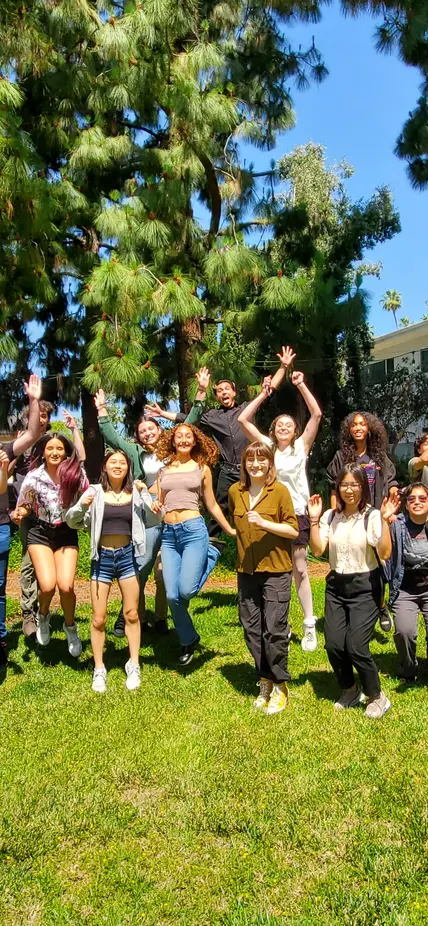
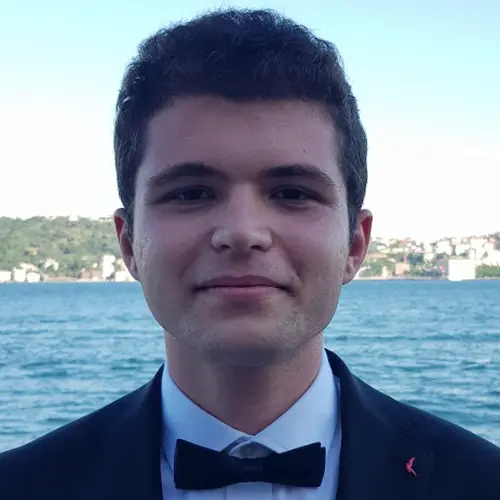
Necdet Canim - Pomona College
Research Program: This summer, I worked on computationally analyzing how the tidal torque applied on a Hot Jupiter by its host star compares with the torque produced by its angular momentum loss to planetary wind. The interplay of these torques might accelerate the planet to extreme speeds, slow it down to an almost stationary state, or cause equilibrium in which the planet would have a constant rotational speed. All of these are significant results that change the orbital destiny of the Hot Jupiter.
Why CASSI? In the past, I got involved in research projects that educational institutions organized. I wanted to experience the professional ambiance of a research institution by interning at Carnegie. Also, I heard great things about the internship program from CASSI alumni with whom I took courses at Pomona College.
Favorite Experience: My favorite part of the program has been my weekly meetings with my mentor. My project is theoretical and requires strong math and coding skills, making it highly likely for me to make mistakes. Whenever I start spiraling down the rabbit hole trying to find a solution to a problem, my mentor's advice and feedback help me figure out practical ways to succeed. Also, he always cares about my mental and physical health and makes sure that I do not experience any burnout.
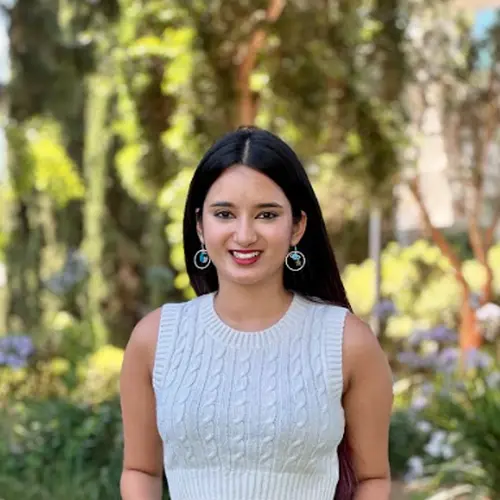
Swathya Singh Chauhan - University of California, Los Angeles
Research Program: This summer, I worked on the Analytical Modeling of Emission Lines from HII Regions. Specifically, I extended the OIII Model from Yang et. al 2023 to NII and SIII lines. This model can be used with the existing ALMA and JWST data for high redshift galaxies and the upcoming Roman Space Telescope for low redshift galaxies. It also functions as a fast post-processing pipeline for FIRE galaxy simulations, allowing direct comparison to observations.
Why CASSI? As an international student, a summer as part of CASSI was an incredible, fully-funded opportunity for me to focus on developing my research skill set while networking at Carnegie. The atmosphere seemed welcoming, the planned activities were exciting, and the range of topics that I could be exposed to within the field was promising. And the summer so far has been all that and more, I feel confident in my abilities as an aspiring researcher!
Favorite Experience: My favorite part about the program has been attending smaller meetings and gatherings such as the Subhalo Evolution, Dark Matter, and Galaxy Physics Group Meetings, Research Teas, and Social Hours. I have loved hearing from experts at different stages in their careers about their research interests and connecting with them in semi-formal and informal settings.
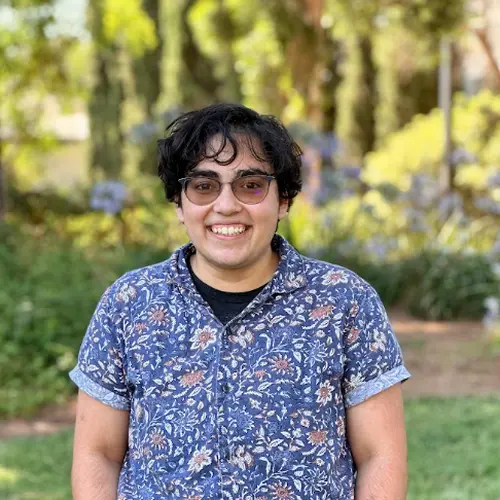
Theo Chawla - Evergreen Valley Community College
Research Program: This summer, I focused on simulating data for a new ground-based near-infrared spectrograph, Henrietta, that we hope will be able to analyze exoplanet atmospheres. By analyzing the light that passes through an exoplanet's atmosphere as it transits in front of its parent star, we hope to identify particular molecules present from the exoplanet. Water is of particular interest, but it is difficult to detect because of the water in Earth's atmosphere. My project focused on testing Henrietta's ability to mitigate the water signature from Earth in our data, making exoplanet atmosphere observations more feasible from ground telescopes.
Why CASSI? One of the most exciting aspects of the CASSI program, when I applied, was its proximity to such incredible current research, but also its history of scientific breakthroughs within astronomy. Learning about the Hubble constant and the expansion and scale of our universe fundamentally changed the way I saw the world. The chance to do research where that discovery was made was impossible to turn down.
Favorite Experience: It's difficult to pick one thing about the program that has been my favorite—the whole experience has been overwhelmingly positive— but I do love being around astronomers who are so passionate about their research and who are so willing to help students starting in the field. There is a wonderful sense of community within the intern cohort as well. The environment of CASSI is more conducive to discovery in astronomy than any other I've been in because everyone here is fascinated by the universe.
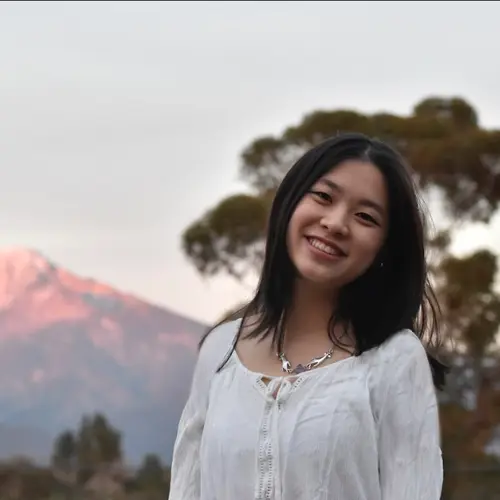
Kaitlyn Chen - Harvey Mudd College
Research Program: This summer, I am analyzing high-resolution spectra to hunt for post-red supergiants (post-RSGs). My objective is to address the RSG problem, which pertains to the discrepancy between observed and modeled data for 8-25 solar mass stars. Although models predict that all stars within this mass range should explode as RSGs, this has only been seen in stars with masses between 8-20 solar masses. Rather than exploding, these stars could be evolving blue-wards after the red supergiant phase, thus becoming a post-RSG. My goals are to spectroscopically characterize the stars in my sample, derive atmospheric parameters, and establish their status as post-RSG objects.
Why CASSI? I chose to work at Carnegie to be surrounded by peers who are also driven by astrophysics and to discover unknowns of our universe!
Favorite Experience: I really enjoy interacting with everyone at Carnegie because I get to learn about different research in this field. The people here are also incredibly friendly, which makes the whole experience even more rewarding!
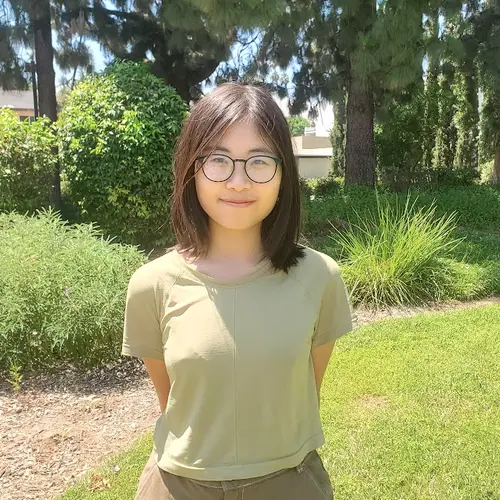
Nhi Doan - Pomona College
Research Program: I worked with Dr. Nick Konidaris to design and build a telescope simulator for testing Henrietta—a near-infrared spectrograph that studies exoplanet atmospheres from the ground. Probing the atmospheres of exoplanets is key to understanding how different types of planets form and evolve, but the task is challenging since exoatmospheric signals can be incredibly faint. To detect these faint signals, the Henrietta instrument is designed to mitigate all sorts of systematic noise and take ultra-precise spectra of exoplanets, which encode information about their atmospheres. We want to verify that Henrietta achieves the desired precision level before being deployed on a Chile telescope in 2024.
The telescope simulator I’m building is a device that helps with that verification by sending light into Henrietta that mimics star images produced by a telescope.
Why CASSI? I am lucky to know people from my school who have interned at Carnegie in the past, and have heard all sorts of wonderful things about the program from them. Also, CASSI is one of the few astronomy research internships open to international students in the US – this is something important to me as an international student from Vietnam.
Favorite Experience: This is my first time doing optical design and instrumentation, and it’s been a blast! Design challenges crop up all the time, and while they can be frustrating, I never feel alone tackling them knowing that I have ample support from my mentors who root for my learning and growth.
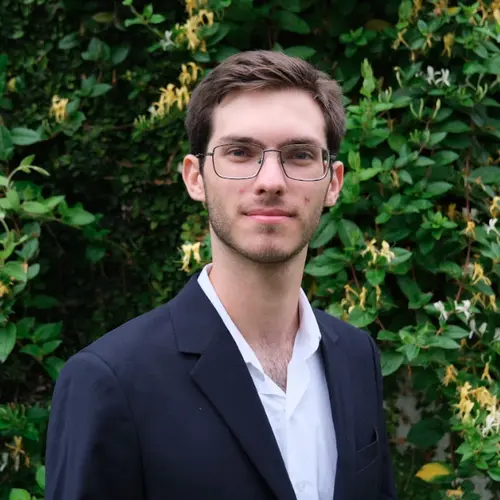
Juan Diego Draxl Giannoni - University of California, San Diego
Research Program: This Summer I worked on analyzing the quiescent radio emission of stars. I was trying to understand its relationship with the star metallicity and the magnetic field.
Why CASSI? I wanted to join Carnegie because it is an amazing institution to do research on all fields of astrophysics, including engineering!
Favorite Experience: My favorite part so far has been to interact a lot of people -including interns, post-docs, and Carnegie staff- that are really passionate about astrophysics and they are all willing to help.
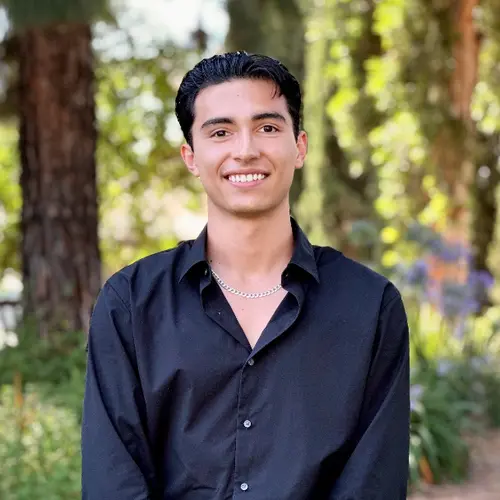
Donavon W. Evans - San Francisco State University
Research Program: I worked alongside Kyle Kremer on making predictions of LISA sources within globular clusters of nearby galaxies. To make predictions we used a simulated catalog of star cluster models created by Cluster Monte Carlo CMC.
Why CASSI? Given this is my second summer at Carnegie in the CASSI program, I chose to return for a bunch of reasons! The first is the welcoming working environment that is created by the faculty here, another reason being that my summer project aligns with my research interests and what I'd like to continue working on in graduate school, and another reason being the developmental workshops which are extremely helpful in preparing me to apply to grad schools this fall.
Favorite Experience: My favorite part of the summer program so far has been the group outings like the dinners where we can connect with graduate students and especially the Dodger game with Carnegie faculty.
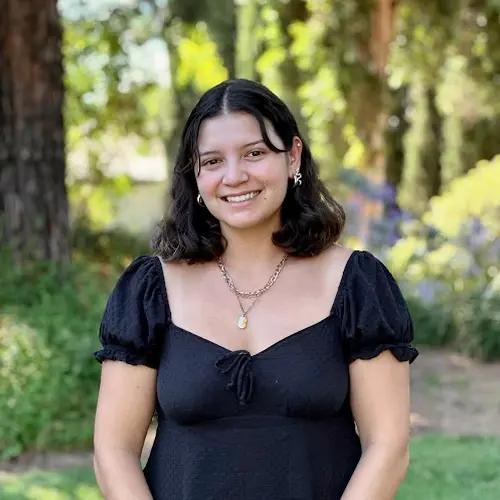
Sofia Franck - University of California, Santa Cruz
Research Program: In my project, I explored the impact of galaxy environment and stellar mass on star formation rates of galaxies located in the redshift range of 2.2-2.8. I specifically studied the quiescent galaxies in this region, which are galaxies that have very low star formation rates. To study the galaxy environment, I used the Lyman-alpha Tomography IMACS Survey (LATIS), which uses a technique called Lyman-alpha tomography to create density maps of the environments at the redshift of 2.2-2.8. The ultimate goal of my project is to disentangle the effects of environment and stellar mass on quiescent galaxies, shedding light on galaxy and protocluster evolution in the early universe.
Why CASSI? I wanted to participate in the CASSI program this summer because I am very interested in pursuing a career in astrophysics research. I was offered to work on a project in the subject area of galaxy evolution and formation, which is an area of astrophysics that I am very interested in. All in all, the CASSI program offered the perfect opportunity for me to get some more experience in what I plan to pursue in the future as well as meet a lot of people in the astrophysics community at all academic levels.
Favorite Experience: So far this summer, I have to say that my favorite part has been getting close to all the other interns. I feel that we have created a great community where we can bounce ideas off of each other and help each other during work and hang out and have fun together when we are outside of work.
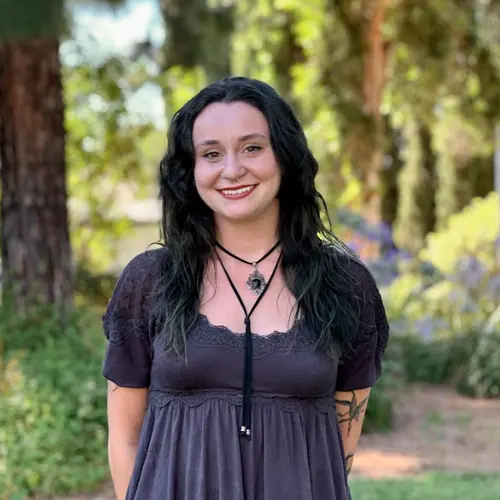
Isa Hahn- Pomona College
Research Program: I worked with Dr. Henrique Reggiani, and my project is on stellar chemistry, specifically looking at subgiants. We used spectral data from two subgiant candidates to corroborate a metallicity and age relation that my advisor previously determined with photometric data. I used different python packages like Spectroscopy Made Harder and Isochrones to analyze the spectral data.
Why CASSI? I wanted to participate in CASSI because of the focus on professional development and learning skills that this program offers. I wanted to learn more about working as a researcher, applying to graduate schools, and communicating scientifically, and this program offers many workshops that focus on these very things. I also had very little computing experience, and I really like how this program includes a coding bootcamp the first week to allow us to develop those skills. These things have been incredibly helpful to me.
Favorite Experience: My favorite part about CASSI so far has been getting to know the other interns. They are all so incredibly smart, and it has been wonderful getting to know them all, and sharing our passion for astronomy. I can't wait to see how we all grow as scientists, and I am excited to hopefully collaborate with many of them in the future!
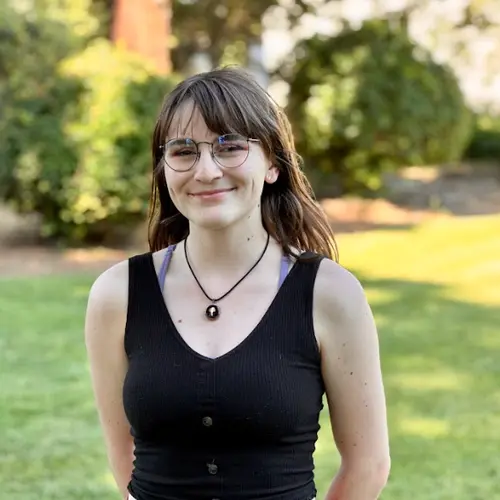
Lauren Henson - Harvey Mudd College
Research Program: My research is about high energy emissions from dwarf galaxies, including emission lines in triply ionized carbon and doubly ionized oxygen. The goal is to figure out what types of galaxies show these emission lines in their spectra and to quantify how strong it is.
Why CASSI? I wanted to work at Carnegie because I was excited about all of the research opportunities they offered. I'm working with a really great mentor, and I feel like I've learned so much from him.
Favorite Experience: My favorite part of the summer has been spending time with the other interns. I've made so many wonderful connections to the others in the program, and they've really made this summer so much fun.
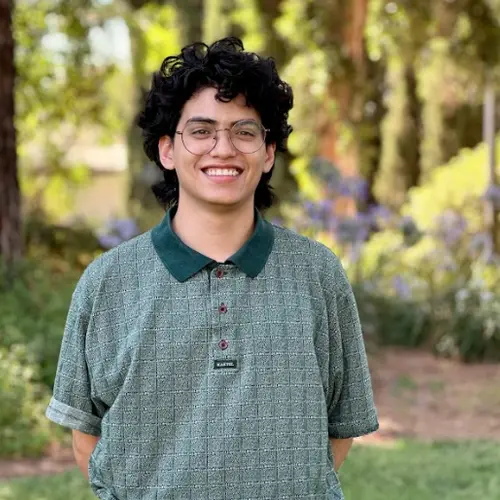
Brayan Hernandez - University of California, Los Angeles
Research Program: My project for CASSI this summer was observational research on galactic-scale gas structures bright in Lyman-alpha emission known as Lyman-alpha blobs (LABs). I was specifically using photometric data of the COSMOS field from the Subaru Hyper-Suprime Cam (HSC) to identify and analyze LABs at a redshift z=4.9 to get a better understanding of their properties and the properties of the galaxies that host these objects.
Why CASSI? I wanted to join CASSI this summer because they encourage marginalized identities in astronomy, therefore, working in an environment where marginalized identities were not only welcomed but supported/wanted was a no-brainer.
Favorite Experience: My favorite part of CASSI so far has been the outreach event we gave to the Upward Bound students at Cal Poly Pomona. It was nice sharing my experiences in college and sharing astronomical facts through scientific demos and telescopes.
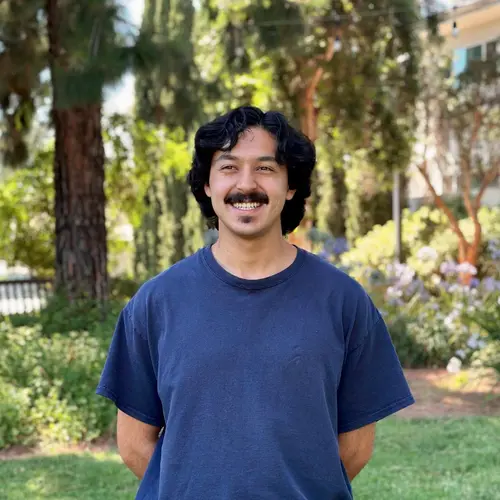
Nicholas Inzunza - University of California, Los Angeles
Research Program: With suspected asymmetries in the Milky Way's dark matter halo taking the form of a tilt with respect to the galactic plane, my mentor, Dr. Ana Bonaca, and I used stellar streams to probe the global distribution of dark matter and constrain this tilt.
Why CASSI? I wanted to join Carnegie to get more experience in researching astrophysics, as I am applying for grad school this fall and hope to get my PhD one day in Physics or Astrophysics.
Favorite Experience: My favorite part of the program so far was seeing the Hale Library and reading some books from there. I also enjoyed making new friends and riding my bike to work.
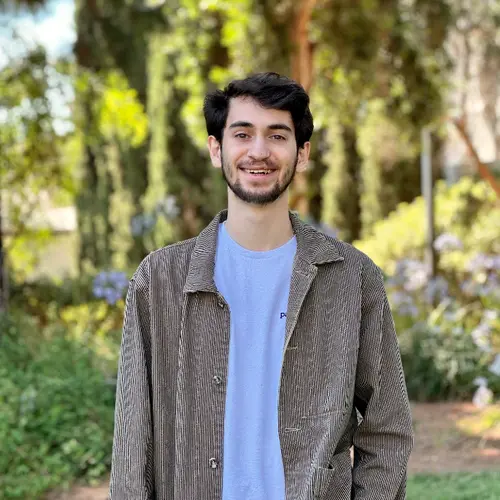
Ian Johnson - Caltech
Research Program: My project was to reconstruct the kilonova light curves for a merger in the distant past. In other words, I study the luminous nuclear fallout after hyper dense stars collide. Within the forge of this explosion, all the heavy elements we see on earth are birthed, so in a way, I study the nuclear origin of the modern world.
Why CASSI? Carnegie spoke to me personally because of the focus on developing strong scientific communication skills—something I feel is often neglected.
Favorite Experience: So far, my favorite part of the CASSI program has been the weekly tea times. It’s riveting to see professionals describe and navigate research as it comes out.
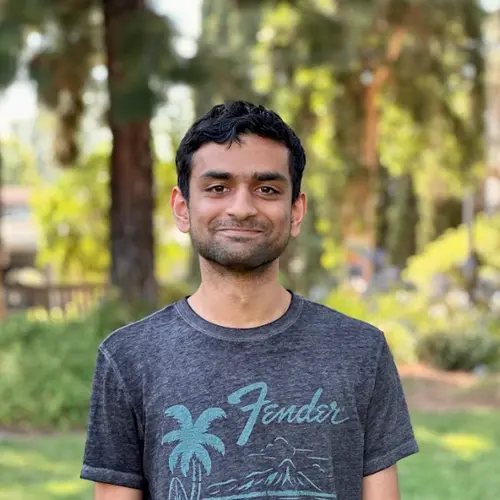
Avi Patel - Caltech
Research Program: My project was on using machine learning to extract novel information from Zwicky Transient Facility light curves. Astronomy has undergone a massive increase in data volumes from ground based observatories so developing algorithms to prioritize which objects should be followed up is vital for maximizing scientific discovery.
Why CASSI? I'm really interested in the intersection between machine learning and astronomy and saw this opportunity to pursue that.
Favorite Experience: The workshops on scientific writing and presentations.
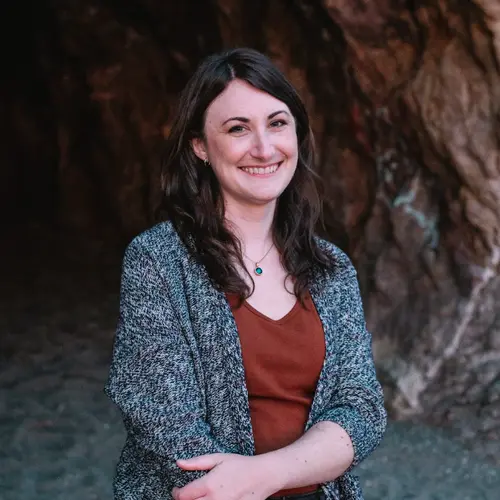
Tonya Peshel - San Francisco State University
Research Program: This summer, I worked on an instrumentation project involving the Magellan Infrared Multi-Object Spectrograph (MIRMOS), an innovative near-infrared spectrograph currently in development at Carnegie. I took on the task of determining the position tolerances for its Atmospheric Dispersion Corrector, an essential component which will correct the wavelength-dependent differential refraction of light caused by Earth's atmosphere
Why CASSI? I wanted to gain experience with hands-on instrumentation research this summer, and the CASSI program was my top choice due to the groundbreaking instrument development initiatives carried out at Carnegie.
Favorite Experience: My favorite part of CASSI is the wide variety of activities we participate in each week. This is a really comprehensive program designed to prepare us for all aspects of being a scientist. I feel very supported, not only in my research but also in preparing for graduate school and exploring career paths. Everyone I've encountered at Carnegie has been so welcoming and generous with their time; this place is truly special!

Domani Sharkey - Caltech
Research Program: This summer I worked with Dr. Josh Simon to investigate the bias in crucial dark matter measurements of the most dark matter-dominated galaxies: ultra-faint dwarf galaxies. Since the amount of dark matter in these galaxies is calculated from the movement of their stars, there lies a danger in the fact that some of these stars could be in multiple-star systems. If that is indeed the case, then these binary stars could make our measurements of the dark matter inaccurate. So I helped remedy this risk by figuring out how many of the stars in local ultra-faint dwarf galaxies are actually binary.
Why CASSI? Part of the reason I was interested in CASSI is because of the large research focus around dark matter, which is one of the areas of astrophysics that I’m most excited about. I also really admire the institution’s extensive contributions to humanity’s understanding of the universe, so I thought it would be amazing to have the opportunity to play a small part in those discoveries.
Favorite Experience: My favorite part of the program was all of the cool, impressive people I’ve gotten to meet. I love being surrounded by people who love space and physics as much as I do.
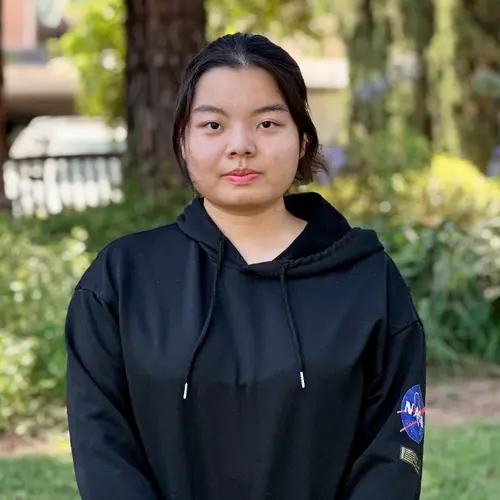
Annabella Yang - University of California, Santa Barbara
Research Program: For a sample of old, red galaxies with redshift around 0.12, I wanted to quantify the relation between stellar population, galaxy evolution, and environment. I had a special focus on the dark matter halo masses and halo centric distance. I look for the correlations of scaling relations such as age, metallicity, recession velocity, velocity dispersion, and element abundance through the method of full spectra modeling.
Why CASSI? Carnegie is a great place and science community to join as an astrophysics student. It gives me the opportunity to explore my interested topics and focus on research for 10 weeks. It also provides a great community such as mentoring and social events.
Favorite Experience: My favorite part about the summer program so far is the Carnegie Community. I enjoy talking to the other interns about their projects and find the related topic. I also love the opportunity to reach out to grad students, post docs, and scientists at Carnegie. They not only give great scientific insights, but also provide useful advices for my future research career.
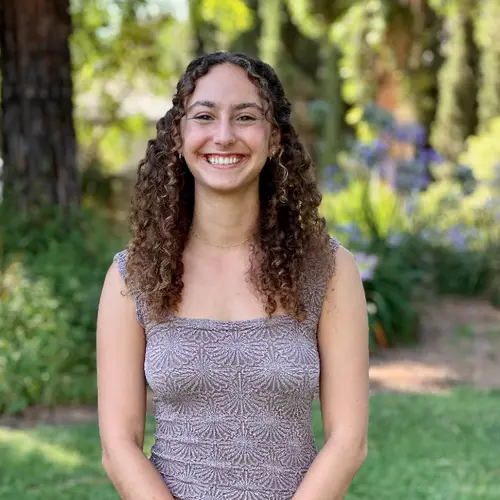
Isabella Zadoyan - California Polytechnic State University San Luis Obispo
Research Program: I am studied the galaxy evolution of galaxies similar to the Milky Way. I specifically compared the metal enrichments of observed and simulated galaxies that are outliers to the well used M-sigma relationship: the relationship between a galaxies supermassive black hole mass and the velocity dispersion of the stars in the galaxy’s bulge. The goal was to determine if outliers to the M-sigma relationship have different metal enrichments or not.
Why CASSI? I wanted to join Carnegie for the CASSI program because it is inspiring to be around so much groundbreaking research and get to take part in a well thought out program that teaches communication, coding, and networking skills I will use in my future career.
Favorite Experience: My favorite part about the summer program so far has been getting to know and build a good working relationship with my incredibly supportive and talented mentor Dr. Nicole N. Sanchez. She gives me the guidance to do my best work analyzing and discovering more and more about our project everyday.